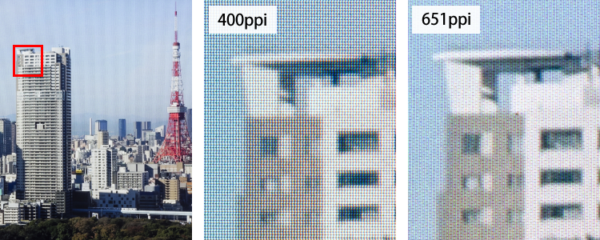Japan Display Has Unveils New VR Panel With 651 PPI: Surely VR is future display technology, as many companies are trying to make VR experience more easy and assessable. As today Japan Display (JDI) has unveiled its latest LTPS TFT LCD technology which is going to use in VR headset and also head mounted display. JDI has gives some innovation to display as its new panel solve the problem of refresh pixel and pixel density, as the refresh rate is one of the bigger drawbacks of VR headset which causes some problem to Humans. The new 3-42-inch panel boosts the pixel density up to 651 pixels-per-inch having a resolution about 1440×1700 resolution. As this much of density will remove some off screen glitches and spots you notice while wearing the VR headset.

Japan Display Has Unveils New VR Panel With 651 PPI:
Talking about another famous VR headset like HTC Vive, Oculus Rift, and PSVR all these displays have stuck under 500 PPI having 447, 461 and 386 PPI respectively. But there is also some good display like in Samsung Gear VR which has 557 PPI having QHD resolution which means that picture will be sharper and vivid. But there is also one of the best display with 1008 PPI which is prototype recently shown off by Sharp.

Talking about other good feature of this display is it’s refresh rate as 3.46-inch VR panel having 90Hz of refresh rate as this refresh found in recent VR headset. As this much of Refresh rate help developer and other VR expertise to provide more content without the issue of motion blur and prevent the wearer from feeling motion sickness.

People who have a keen interest in Display panel spotted that this display has LCD panel rather than an OLED display which we saw in today’s display, while the display has the capability which shows that it can withstand in a competitive situation. The recently unveiled Google Daydream specification states that display Black to White latency must be less than 3ms, and this panel offers a typical 3ms response, falling to 6ms worst case, which just falls a little short of the ideal. This was achieved using a strobing backlight technology, which helps to greatly reduce motion blur on LCD panels.
Japan Display also has plans to make a new display with 800 PPI for their future VR experience. As this much PPI will able to provide this much of detailing and crisp viewing experience. This much of PPI require a good GPU power available which is surely revels in future Soc.




